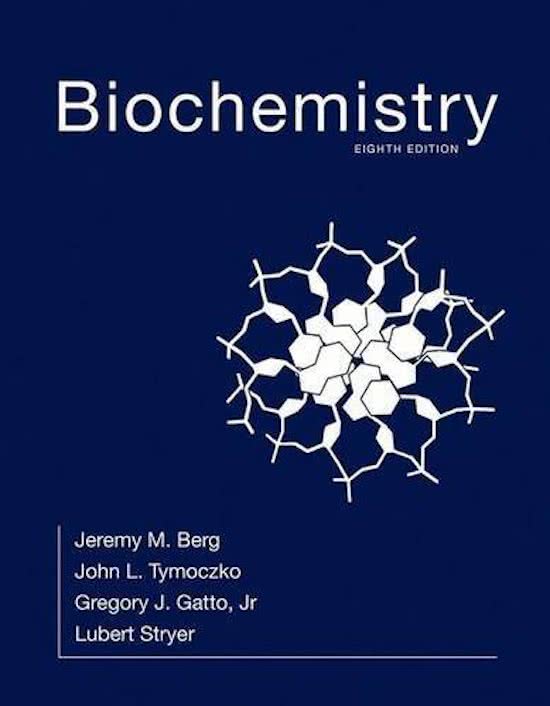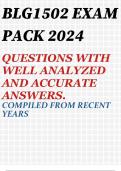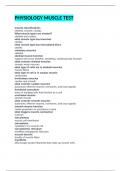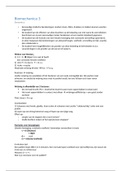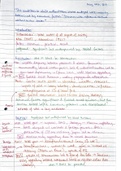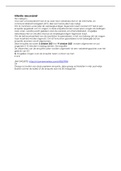Atherosclerosis and nuclear receptors
Carlie de Vries
Atherosclerosis
Buildup of a plaque → closing of arteries
If arteries are affected → obstruction of the normal blood flow → underlying pathology of
myocardial and cerebral infarction
Risk factors
- Age
- Obesity – diet & exercise
- High blood pressure / hypertension
- High LDL
- Smoking
- Diabetes
- Genetic component
→ different symptoms between genders – women have lower risk of developing atherosclerosis until
menopause but they quickly catch up after that
Atherosclerotic lesions/plaques
Between the smooth muscle cells (SMCs) and the endothelial layer of the vessel walls
LDL goes into the vessel wall → LDL becomes oxidized (oxLDL) → LDL is no longer recognized by the
LDL receptor (LDLR), but it is recognized by the scavenger receptor on macrophages (monocyte
enters vessel wall - becomes a
macrophage) → macrophages take up LDL
→ take up so much that they become too
big and get stuck → foam cells →
secreted cytokines & growth factors →
SMCs grow faster
→ plaque
The development of an atherosclerotic
plaque is a slow cellular process
Genetic component
- Familial hypercholesterolemia (FH) →
deficiency in LDLR
- Tangier disease → deficiency in ABCA1
Multiple genes are involved in atherosclerosis – for example multiple genes are involved in the
adherence and migration of monocytes into the vessel wall and multiple factors are involved in the
oxidation of LDL and the uptake of oxLDL by macrophages
→ multifactorial disease
,An atherosclerotic plaque can rupture – this causes
disturbance to the endothelial cells that cover the
luminal side of the artery/plaque → coagulation →
formation of a blood clot
→ if this happens in a coronary artery this can result in
an acute myocardial infarction
Cells involved in atherosclerosis
- Monocytes / macrophages
- Endothelial cells
- Smooth muscle cells
- T-cells
Atherosclerosis can be treated with a stent in the obstructed coronary artery
- Go in via a catheter in the leg or arm → small balloon to create more lumen in the obstructed artery
→ place the stent to prevent closing up of the vessel
Problem → in-stent restenosis (1/3) – the re-clogging of the vessel wall into the stent
Most problematic is the proliferation of SMCs for the occurrence of in-stent restenosis
o Drug-eluting stents
• Stents that contain rapamycin → mTOR enhanced expression of p27kip1 ↑ →
beneficial because this inhibits growth of SMCs – slower-growing lesion
• Stents that contain taxol → microtubule disruption – prevents microtubles from
pulling apart the chromosomes during cell division
➔ Stop division of all cells – including endothelial cells which protect against coagulation →
patients also need to take anticoagulant/anti-platelet drugs – otherwise chance of in-stent
thrombosis
Activated SMCs – via cytokines & growth factors – lose their contractile function → reversible
process
In activated SMCs there is upregulation of Nurr-1, Nurr-77 and NOR-1 → nuclear hormone receptors
of the same family
Nuclear hormone receptors have a DNA-
binding domain, a transcription-activating
domain and a ligand-binding domain
- No ligand → helix 12 in open
conformation → co-repressor is bound
→ no transcription
- Ligand → conformational change of helix
12 – closed → co-repressor falls off, co-activator
bound → HAT recruited → histone acetylation → binding of remodeling engine and chromatin
remodeling → binding of transcription machinery / RNApol recruitment → transcription
,Create a dominant-negative Nur-77 variant → lacks transcription-activating domain (ΔTA)
→ can bind DNA but it cannot promote transcription → inhibition of Nurr-77, Nur-1 and NOR-1
activity
If ΔTA → enhances DNA synthesis in SMCs → enhances growth of SMCs
→ this variant is the inactive/inhibitory variant of Nurr-77 meaning that
Nurr-77 inhibits growth of SMCs
This result was not expected because Nurr-77 is present in plaques, but it is
not/barely present in normal vessel wall
Also shown in vivo in transgenic mice
Nurr-77 also promotes the survival of endothelial cells and reduces the
inflammatory response by macrophages → exactly what you want
→ Nurr-77 as a target to prevent in-stent restenosis
6-mercaptopurine (6-MP) enhances Nurr-77 activity → seems like the ideal drug for on a stent
Unfortunately, dosage was not sufficient enough and loading of higher dosages on the stent is
difficult → find a more specific and sensitive activator of Nurr-77
Genetic information → can be used to identify patients that are at risk of developing in-stent
restenosis
1/3 patients develops it – if you can identify those patients you do not need to give the drug-eluting
stent to all patients (patients that are not at risk do not have to go through the trouble of taking anti-
platelet drugs because they will just get a normal stent)
- Follow patients and look for SNPs in genes that are involved in SMC proliferation
p27kip1 – cell cycle inhibitor at G1/S checkpoint
SNP at the -838 position C→A → if the patients have the SNP → more
restenosis-free
→ SNP is protective
Promoter of p27 with either AA or CC was placed in front of the
luciferase gene → luciferase activity was much higher for the AA-
variant
→ AA SNP stimulates p27 activity → inhibits growth of SMCs
However the CC-variant is more beneficial for preventing rupture of the plaques
Plaques that are not SMC-rich are more empty on the inside → rupture more easily
, Abdominal aortic aneurysm (AAA)
Carlie de Vries
Just like atherosclerosis AAA is a pathological chronic inflammatory condition of an arterial vessel
walls → AAA is characterized by widening of the vessel lumen
Risk factors
- Age (starts at 50, atherosclerosis at 15)
- Gender (>M)
- Smoking
- Family history
- Atherosclerosis
- Diabetes ↓ (might be because of diabetes itself but could also be because of the drugs the patients
take)
Wall stress
Atherosclerosis in the inner curvature where there is low shear stress
AAA in the outer curvature where there is high shear stress
No medication for aneurysm → surgery
AAA has little to no symptoms → eventually rupture of the aorta – often lead to death (80%
mortality after rupture)
adventitia
Arterial vessel consists of (from inside to outside)
- Lumen → plasma and blood cells
- Intima → endothelial cells
- Media → smooth muscle cells
- Adventitia → fibroblasts
Atherosclerosis → disease of the intima – expands into the lumen
AAA → disease of the media and adventitia – expansion of arteries is normally limited by the
adventitia → degradation of the fibrillar collagen network by proteases → no limit to
expansion
Proteases cleave collagen
- Fibrillar collagen – insoluble collagen
- Gelatin – soluble collagen
→ can be degraded by (different) members of the matrix metalloproteinases (MMPs) and cysteine
proteases (cathepsins) families
These proteases come from inflammatory cells (lots of leukocytes in aneurysm) and activated cells of
the vessel wall (SMCs, endothelial cells, fibroblasts)
Strategy
Inhibit proteases → less degradation of collagen → more collagen → less aneurysm growth / less
aorta degradation
Carlie de Vries
Atherosclerosis
Buildup of a plaque → closing of arteries
If arteries are affected → obstruction of the normal blood flow → underlying pathology of
myocardial and cerebral infarction
Risk factors
- Age
- Obesity – diet & exercise
- High blood pressure / hypertension
- High LDL
- Smoking
- Diabetes
- Genetic component
→ different symptoms between genders – women have lower risk of developing atherosclerosis until
menopause but they quickly catch up after that
Atherosclerotic lesions/plaques
Between the smooth muscle cells (SMCs) and the endothelial layer of the vessel walls
LDL goes into the vessel wall → LDL becomes oxidized (oxLDL) → LDL is no longer recognized by the
LDL receptor (LDLR), but it is recognized by the scavenger receptor on macrophages (monocyte
enters vessel wall - becomes a
macrophage) → macrophages take up LDL
→ take up so much that they become too
big and get stuck → foam cells →
secreted cytokines & growth factors →
SMCs grow faster
→ plaque
The development of an atherosclerotic
plaque is a slow cellular process
Genetic component
- Familial hypercholesterolemia (FH) →
deficiency in LDLR
- Tangier disease → deficiency in ABCA1
Multiple genes are involved in atherosclerosis – for example multiple genes are involved in the
adherence and migration of monocytes into the vessel wall and multiple factors are involved in the
oxidation of LDL and the uptake of oxLDL by macrophages
→ multifactorial disease
,An atherosclerotic plaque can rupture – this causes
disturbance to the endothelial cells that cover the
luminal side of the artery/plaque → coagulation →
formation of a blood clot
→ if this happens in a coronary artery this can result in
an acute myocardial infarction
Cells involved in atherosclerosis
- Monocytes / macrophages
- Endothelial cells
- Smooth muscle cells
- T-cells
Atherosclerosis can be treated with a stent in the obstructed coronary artery
- Go in via a catheter in the leg or arm → small balloon to create more lumen in the obstructed artery
→ place the stent to prevent closing up of the vessel
Problem → in-stent restenosis (1/3) – the re-clogging of the vessel wall into the stent
Most problematic is the proliferation of SMCs for the occurrence of in-stent restenosis
o Drug-eluting stents
• Stents that contain rapamycin → mTOR enhanced expression of p27kip1 ↑ →
beneficial because this inhibits growth of SMCs – slower-growing lesion
• Stents that contain taxol → microtubule disruption – prevents microtubles from
pulling apart the chromosomes during cell division
➔ Stop division of all cells – including endothelial cells which protect against coagulation →
patients also need to take anticoagulant/anti-platelet drugs – otherwise chance of in-stent
thrombosis
Activated SMCs – via cytokines & growth factors – lose their contractile function → reversible
process
In activated SMCs there is upregulation of Nurr-1, Nurr-77 and NOR-1 → nuclear hormone receptors
of the same family
Nuclear hormone receptors have a DNA-
binding domain, a transcription-activating
domain and a ligand-binding domain
- No ligand → helix 12 in open
conformation → co-repressor is bound
→ no transcription
- Ligand → conformational change of helix
12 – closed → co-repressor falls off, co-activator
bound → HAT recruited → histone acetylation → binding of remodeling engine and chromatin
remodeling → binding of transcription machinery / RNApol recruitment → transcription
,Create a dominant-negative Nur-77 variant → lacks transcription-activating domain (ΔTA)
→ can bind DNA but it cannot promote transcription → inhibition of Nurr-77, Nur-1 and NOR-1
activity
If ΔTA → enhances DNA synthesis in SMCs → enhances growth of SMCs
→ this variant is the inactive/inhibitory variant of Nurr-77 meaning that
Nurr-77 inhibits growth of SMCs
This result was not expected because Nurr-77 is present in plaques, but it is
not/barely present in normal vessel wall
Also shown in vivo in transgenic mice
Nurr-77 also promotes the survival of endothelial cells and reduces the
inflammatory response by macrophages → exactly what you want
→ Nurr-77 as a target to prevent in-stent restenosis
6-mercaptopurine (6-MP) enhances Nurr-77 activity → seems like the ideal drug for on a stent
Unfortunately, dosage was not sufficient enough and loading of higher dosages on the stent is
difficult → find a more specific and sensitive activator of Nurr-77
Genetic information → can be used to identify patients that are at risk of developing in-stent
restenosis
1/3 patients develops it – if you can identify those patients you do not need to give the drug-eluting
stent to all patients (patients that are not at risk do not have to go through the trouble of taking anti-
platelet drugs because they will just get a normal stent)
- Follow patients and look for SNPs in genes that are involved in SMC proliferation
p27kip1 – cell cycle inhibitor at G1/S checkpoint
SNP at the -838 position C→A → if the patients have the SNP → more
restenosis-free
→ SNP is protective
Promoter of p27 with either AA or CC was placed in front of the
luciferase gene → luciferase activity was much higher for the AA-
variant
→ AA SNP stimulates p27 activity → inhibits growth of SMCs
However the CC-variant is more beneficial for preventing rupture of the plaques
Plaques that are not SMC-rich are more empty on the inside → rupture more easily
, Abdominal aortic aneurysm (AAA)
Carlie de Vries
Just like atherosclerosis AAA is a pathological chronic inflammatory condition of an arterial vessel
walls → AAA is characterized by widening of the vessel lumen
Risk factors
- Age (starts at 50, atherosclerosis at 15)
- Gender (>M)
- Smoking
- Family history
- Atherosclerosis
- Diabetes ↓ (might be because of diabetes itself but could also be because of the drugs the patients
take)
Wall stress
Atherosclerosis in the inner curvature where there is low shear stress
AAA in the outer curvature where there is high shear stress
No medication for aneurysm → surgery
AAA has little to no symptoms → eventually rupture of the aorta – often lead to death (80%
mortality after rupture)
adventitia
Arterial vessel consists of (from inside to outside)
- Lumen → plasma and blood cells
- Intima → endothelial cells
- Media → smooth muscle cells
- Adventitia → fibroblasts
Atherosclerosis → disease of the intima – expands into the lumen
AAA → disease of the media and adventitia – expansion of arteries is normally limited by the
adventitia → degradation of the fibrillar collagen network by proteases → no limit to
expansion
Proteases cleave collagen
- Fibrillar collagen – insoluble collagen
- Gelatin – soluble collagen
→ can be degraded by (different) members of the matrix metalloproteinases (MMPs) and cysteine
proteases (cathepsins) families
These proteases come from inflammatory cells (lots of leukocytes in aneurysm) and activated cells of
the vessel wall (SMCs, endothelial cells, fibroblasts)
Strategy
Inhibit proteases → less degradation of collagen → more collagen → less aneurysm growth / less
aorta degradation


